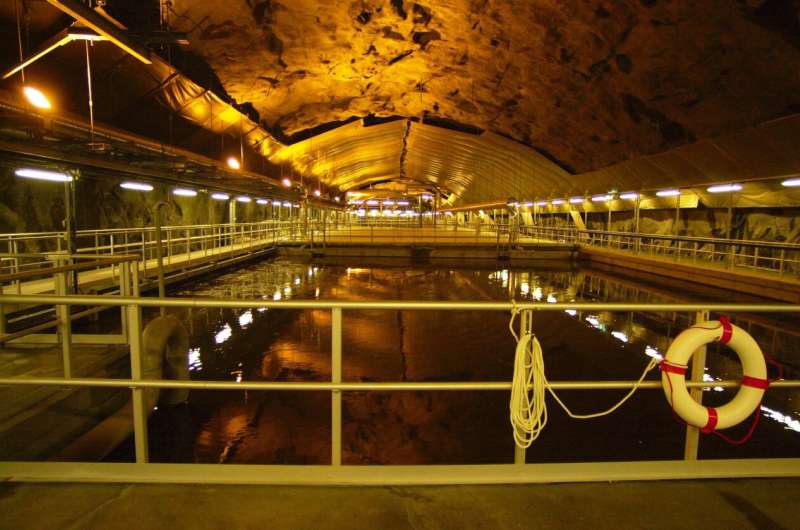'Peak phosphorus' is upon us, and sewage is valuable muck

A world without phosphorous is a world without life. But phosphorous is a finite resource, so researchers are recovering it from sewage.
According to the online news agency ABC Nyheter in Norway, the phosphorous crisis is perhaps the least well-known emergency in the world today. The Norwegian research news website forskning.no says that many scientists are warning of a state of "peak phosphorus," comparable to the expression "peak oil."
The adoption of recycling and a circular economy are thus essential if we are to ensure that this vital element is not lost. This is where a research project called Recover comes in. With SINTEF as a research partner, collaborating with NTNU and the Norwegian University of Life Sciences (NMBU), this vital element can be recovered.
"SINTEF's role in the Recover project is primarily to develop wastewater treatment processes that ensure that phosphorous is recovered using as little energy as possible," says Herman Helness, a Senior Researcher at SINTEF. "We're working on a forward osmosis-based approach that may be suitable for coastal sewage cleaning plants," he says.
A finite resource—both physically and politically
But before Helness explains in detail how forward osmosis works, a little about the importance of recovering phosphorous—an element that is curious in many ways.
For instance, it glows in the dark and is self-igniting.
"Phosphorous is a finite resource, not only physically, but also politically," says Helness. "Most of it is found in the western Sahara occupied by Morocco, and in China. So, in political terms, it is desirable to identify alternative sources," he says.
Phosphorous is common in sewage water, and the aim of the project is to recover it for use as fertilizer. Currently, a sludge residue that remains after the cleaning of wastewater is used for spreading on fields to improve soil quality.
However, experiments demonstrate that this is not a particularly effective way for soils to exploit the phosphorous and nitrogen contained in the sludge.
Moreover, Norwegian statutory regulations that govern fertilizer manufacture place strict requirements on the treatment and use of sludge. For the most part, these quality requirements address issues associated with odor, heavy metal concentrations and the removal of bacteria.
"Future regulations will probably place restrictions on farmers' ability to use sludge as agricultural fertilizer due to requirements related to the maximum content of phosphorous in the sludge," says Helness. This is a sufficient additional incentive for finding methods that enable the recovery of phosphorous from the sludge and to exploit it more effectively than in the past," he says.
Suitable for coastal sewage cleaning plants
SINTEF has arrived at the idea that forward osmosis may offer opportunities for a more optimal exploitation of phosphorous. This happens by sending the water through a semi-permeable membrane. During this process, the water molecules move from a solution with a higher water concentration to one with a lower water concentration.
In particular, the method is suited to coastal sewage cleaning plants where high concentrations of salt in the seawater enable water in the wastewater to pass easily through the membrane. All organic particles and elements such as nitrogen and phosphorous are kept back on the wastewater side.
"The principle of osmosis means that there is no need to input additional energy to achieve the desired effect," explains Helness. "The water that passes into the sea is very well cleaned, and we are left with a concentrated flow of sludge on the wastewater side from which we can recover the phosphorous," he says.
Laboratory experiments involving wastewater, or sewage, are commonly carried out using "artificial" sewage. But SINTEF believes that this isn't good enough. Experiments at the laboratory at Gløshaugen in Trondheim use real sewage diverted from neighboring buildings.
Mitigating water shortages
We have adequate supplies of freshwater in Norway, but water shortages are becoming a growing problem in many parts of the world. Many countries produce fresh water from salt water by using reverse osmosis membrane technology. The problem is that this is an energy-intensive process.
"When the cleaned sewage water mixes with the salt water along the coast, the salt water becomes diluted," says Helness. "And because there is less salt in this water than in normal sea water, the process of making fresh water is less energy-intensive," he explains.
The researchers are currently working to calculate the costs involved in applying this method. The principle of osmosis means that the wastewater stream, or sludge, is more concentrated. Less volume means that the sewage cleaning plants can be smaller. Less energy is used to recover the phosphorous from the sludge.
The method being developed by SINTEF is new and is not currently being applied.
For its part, NTNU is conducting experiments on the biological recovery of phosphorous. This method, which is currently being applied at a full-scale plant in Hamar, involves the cultivation of a group of phosphorous-accumulating microorganic bacteria. NTNU aims to optimize this approach.
"This is a major contribution towards achieving a circular economy," says Helness. "Our short-term vision is to adapt Norwegian and global value chains to the idea of resource recycling and achieve a viable market," he says.
Provided by Norwegian University of Science and Technology




















